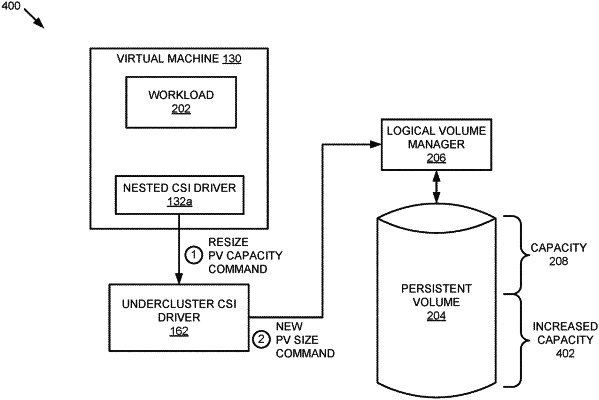| CPC G06F 9/45558 (2013.01) [G06F 9/4411 (2013.01); G06F 2009/4557 (2013.01); G06F 2009/45566 (2013.01)] | 15 Claims |

|
1. A method comprising:
instantiating, by a host system, a virtual machine comprising an overcluster that resides in the virtual machine, wherein the overcluster comprises a nested container storage interface (CSI) driver;
providing communication endpoints of an undercluster CSI driver of an undercluster residing on the host system to the nested CSI driver to enable transmission of commands from the nested CSI driver to the undercluster CSI driver;
receiving, at the nested CSI driver, a create-volume command from a workload executing in the virtual machine, wherein the create-volume command is to create a new persistent volume to be provisioned for storage of data generated by the workload;
converting, by the nested CSI driver, the create-volume command to a resize command that identifies a previously generated persistent volume allocated to the workload;
transmitting the resize command to the undercluster CSI driver, wherein the resize command causes the undercluster CSI driver to increase a capacity of the previously generated persistent volume, wherein the undercluster is a first cluster management operator managing a cluster of physical computing resources that support the virtual machine, and wherein the overcluster is second cluster management operator executing within the virtual machine; and
transmitting, from the undercluster CSI driver to a volume management component in view of the resize command, an additional command to increase the capacity of the previously generated persistent volume, wherein the volume management component is a logical volume manager or network storage driver.
|